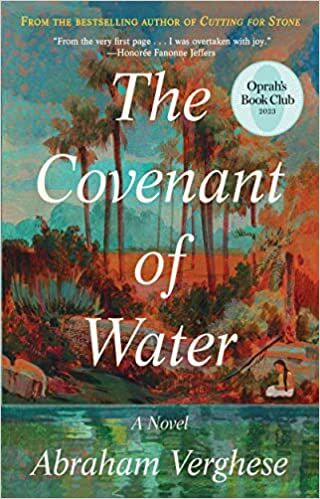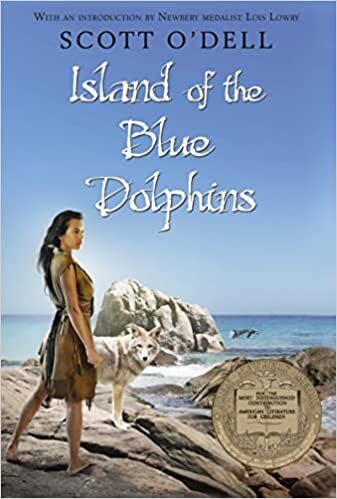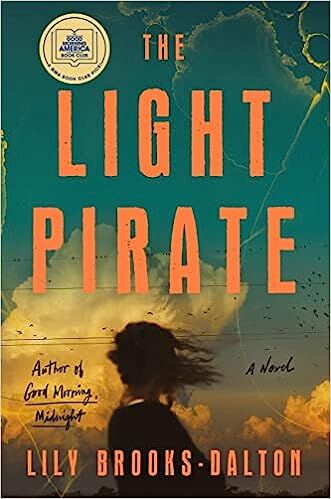It’s that time of year when Tucsonans start thinking a lot about the weather. The summer monsoon does that to us.
Will it rain during Memo’s birthday party next weekend? Will I be able to cross the wash and get home? Is that a new stain on my ceiling?
In keeping with the season, volunteers with the Tucson Festival of Books were asked to recommend books featuring water in an important role. Not surprisingly, they all had their favorites:
“The Covenant of Water” by Abraham Verghese may be the most broadly acclaimed novel of the year. It follows three generations of a family in South India, a family that has lost at least one person per generation by drowning. The story begins in 1900 and follows the life of a 12-year-old girl through the remarkable changes she saw in her life … and the sobering sacrifices she made. Along the Malabar Coast, water is everywhere, and – as the girl’s father used to say – all water is connected.” – Thea Chalow

“The Raging Storm” by Ann Cleeves will reintroduce us to Inspector Matthew Venn, who returns to a town he lived in and left years before. Scheduled for release Sept. 5, the case involves a British celebrity who arrives in town unexpected and leaves tragically … murdered and left in a dinghy off Scully Cove. – Tricia Clapp

“Island of the Blue Dolphins” by Scott O’Dell was published in 1960 and has been in print ever since. It is still a bestseller among children ages 9-12, and many adults now read it every summer just to feel its joy again. Based on a true story, it features a young Nicoleno Indian girl who — in the early 1800s — found herself alone on an island off Southern California. She wasn’t found for 18 years. – Gay Vernon

“When You Can Swim” by Jack Wong is a gorgeous, poetic picture book that celebrates the freedom and joy of swimming. It offers beginning swimmers both reassurance and promises of adventure and discovery that will come “when you can swim.” – Kathy Short

“Science be Dammed” by Eric Kuhn and John Fleck explored how mismanagement may have dealt a fatal blow to the Colorado River. Even when it became obvious the river could not possibly meet the needs of exploding populations in the American Southwest, bureaucrats closed their eyes, crossed their fingers and prayed things would somehow work out. They haven’t. – Abby Mogollon

“Captured” by Beverly Jenkins is an oldie but goodie from one of the top authors in modern romance. Published in 2009, it introduces us to a stunning young slave who gets to know a rogue privateer. – Jessica Pryde

“The Light Pirate” by Lily Brooks-Dalton tells the story of Wanda, a young woman born during a hurricane in coastal Florida. Moving from childhood to adulthood, Wanda stays in the same area and adapts to the changing landscape … and the people who now live in a place abandoned by civilization. – Emily Walsh

“Water Always Wins” by Erica Gies. Week by week, year after year we are now reminded how fragile our environment has become. The key player in this drama is water, and in this book Gies argues that our current infrastructure is actually making the problem worse. Gies, a science journalist, suggests we ask ourselves “What does water want?” … because water always wins. – Jennifer Casteix

“Fifty Words for Rain” by Asha Lemmie is a sad yet beautiful story of an abandoned child who is raised by abusive grandparents and confined on their estate in Japan. The story explores her complicated relationships with the grandparents and a half-brother. Rain and water have several representations within the story, one of them being Nori’s “cleansing.” There’s also the waterworks experienced by many of the book’s readers. – Jeaiza Quiñones Ivory

“Their Eyes Were Watching God” by Zora Neale Hurston was first published in 1937 and quickly rejected by a reading public that was not ready for a strong, Black female protagonist. Reintroduced in 1978, the book has become one of the most widely read and highly acclaimed novels in Black literature. The story follows a Black woman’s search for love, life and independence in a much different time. – Kim Peters

“Mermaids in Paradise” by Tucsonan Lydia Millet is a brilliantly funny book that explores a deadly serious topic: the impact modern society is having on our environment. We follow honeymooners Deb and Chip, who enlist other nature-lovers to stop a resort from turning a coral reef into a theme park. – Gay Vernon

“The Mermaid of Black Conch” by Monique Roffey spins the enchanting tale of a cursed mythical creature and the lonely fisherman who falls in love with her. – Meg Files

“Cornerstone at the Confluence” by Jason Anthony Robison. Signed in November 1922, the Colorado River Compact is a collection of laws and policies that still govern usage of the river’s water and power. In this book, published by University of Arizona Press last year, Robison prescribes ways we might revise the compact to ensure the river’s future. – Abby Mogollon

“The Sound of the Sea” by Cynthia Barnett combines history with science to trace our long love affair with seashells and the hidden lives of the mollusks that make them. Barnett then widens her lens to tell a larger story about our oceans, the environment, and preservation. – Thea Chalow
The Tucson area saw heavy wind, hail and rain Monday afternoon as the 2023 monsoon kicked off.
By 6 p.m., the Rillito River had been brought back to life after weeks of excessive, dry heat. This clip shows the river just west of North Campbell Avenue.

















